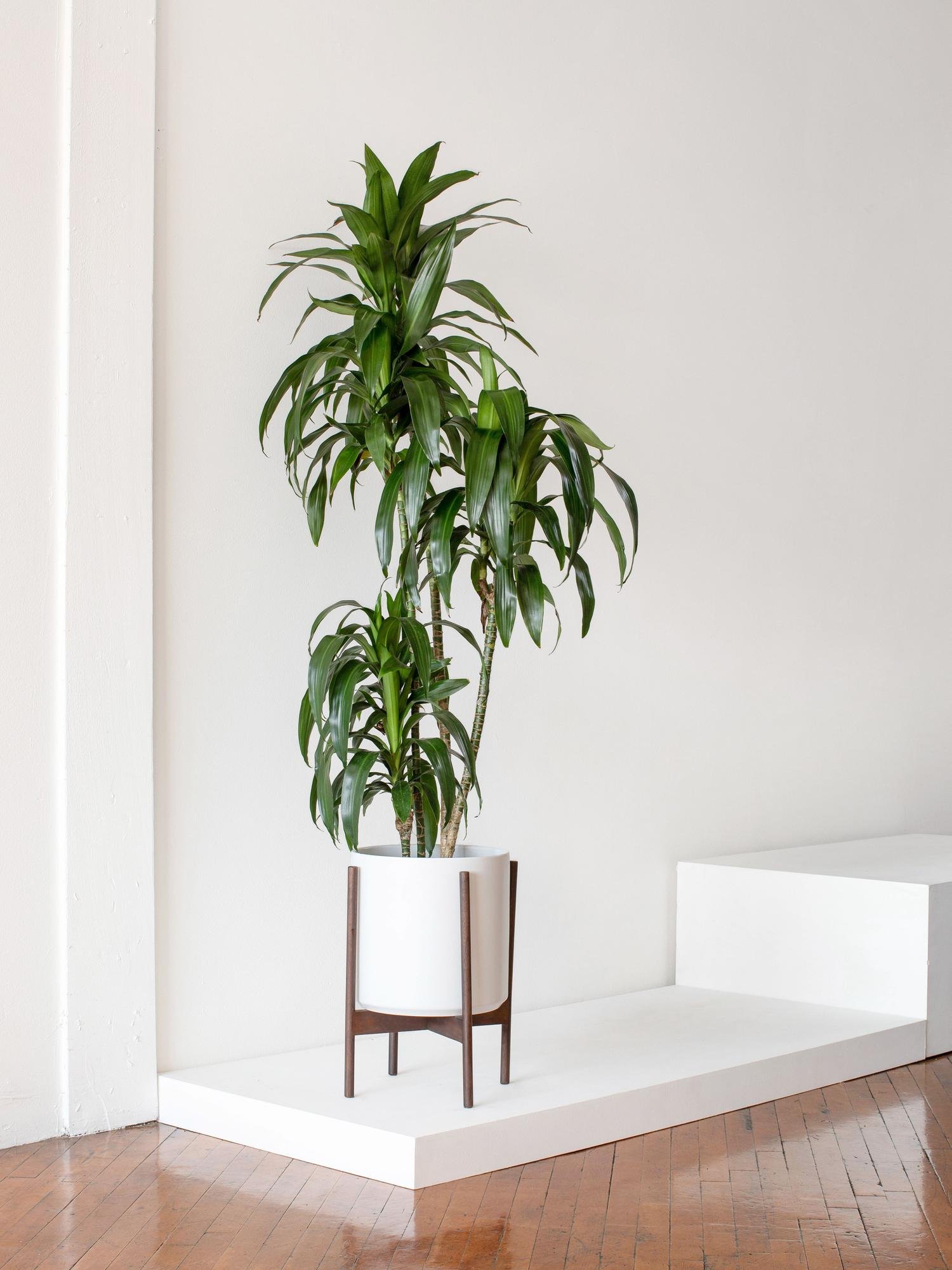How to Care For and Grow Your Dracaena Lisa
Light
The Dracaena Lisa prefers bright to medium, indirect light
The Dracaena Lisa can tolerate low light environments
Water
Water the Dracaena Lisa when the top 1-2 inches of soil is dry
Take care not to overwater
Growth
This statuesque Dracaena Lisa has a moderate to low growth rate.
Never overwater your plants with these sleek and simple moisture meters.
MOISTURE METERS
Our moisture meter is the perfect tool for keeping your plants healthy and thriving! Its innovative design features a blue color indicator that signals when the soil has enough water, and a white color indicator that alerts you when it's time to water your plant. With its minimalist aesthetic, this moisture meter seamlessly blends in with your plants, enhancing their beauty and making them easier to care for. Order our moisture meter now to ensure your plants are always at their best!
Common problems with the Dracaena Lisa
Dry Leaf Tips and Edges - Low Humidity or Overwatering
Symptom - Leaf tips exhibiting dryness and edges and tips
Cause - Low humidity, dry environment with heat/AC
Remedy - Mist Dracaena Lisa x2 weekly, adjust watering schedule if necessary.
Dry Patches or Dry Streaks on Leaves - Too Much Direct Light
Symptom - Leaves exhibiting dry patches (often round in form) or dry streaking
Cause - Too much direct light
Remedy - Ensure that your Dracaena Lisa is situated in a spot where it receives indirect light. If it is too near to a window, move it to a spot 3+ feet from the window.
Evidence of Insects
Symptom - Whitish bumps, indicating scale, or black dots, indicating mites
Cause - Insect infestation
Remedy - Wash all foliage and trunks of Dracaena Lisa with a mixture of gentle soap and water.
Discover the beauty of the Dracaena Lisa's unique striped foliage! This low-maintenance plant purifies the air and adds a touch of natural elegance to any space. Order now and enjoy nature up close!
How to maintain a beautiful and healthy Dracaena Lisa
Maintenance - A little trim is all that most Dracaena Lisa’s need to keep their foliage looking fresh!
Trimming & reshaping - If your Dracaena Lisa experiences browning at its leaf tips, this can be remedied by trimming leaves with clean, sharp scissors or shears. Follow the natural direction of the leaf as you manicure it.
Cleaning - You can clean your Dracaena Lisa’s foliage and trunks by gently wiping it down with a soft cloth, or a mixture of gentle soap and water.Repotting - Dracaena Lisas are moderate to slow growers, and repotted is typically not necessary within the first couple years.
When to repot - when your Dracaena Lisa’s roots tightly encircle its pot or many stick out, it may be time to repot.
Pot sizing - if you want your plant to grow taller, select a pot that’s 2” in diameter larger than your Dracaena Lisa’s current pot. If you prefer for your plant to stay the same height, its original nursery pot can be re-used, and the soil simply refreshed.
Get your hands dirty - spread out newspaper on the floor, remove the plant from the pot and shake off as much of the old soil as possible so that you have clean roots. Place the plant in the center of the pot, add new soil and pat down firmly. Water the soil thoroughly and place the plant in an area with bright indirect light. Your plant will take 2-4 weeks to settle from the shock and adjust to its new home.
How to Propagate the Dracaena Lisa
Dracaena Lisas can be propagated from top cuttings. Simply cut a portion from the very top of your Dracaena Lisa below a leaf line. Place the cutting in a container of moist soil or a glass of water. When roots form, re-pot into a new container with fresh, moist soil.
The Dracaena Lisa
Elevate your space with the stunning Dracaena Lisa plant - the perfect low-maintenance addition for nature lovers! Its vibrant green foliage and air-purifying properties make it a stylish and eco-friendly statement piece, ideal for brightening up any home or office. Order now to bring a touch of nature to your decor and enjoy the beauty of this gorgeous plant!



